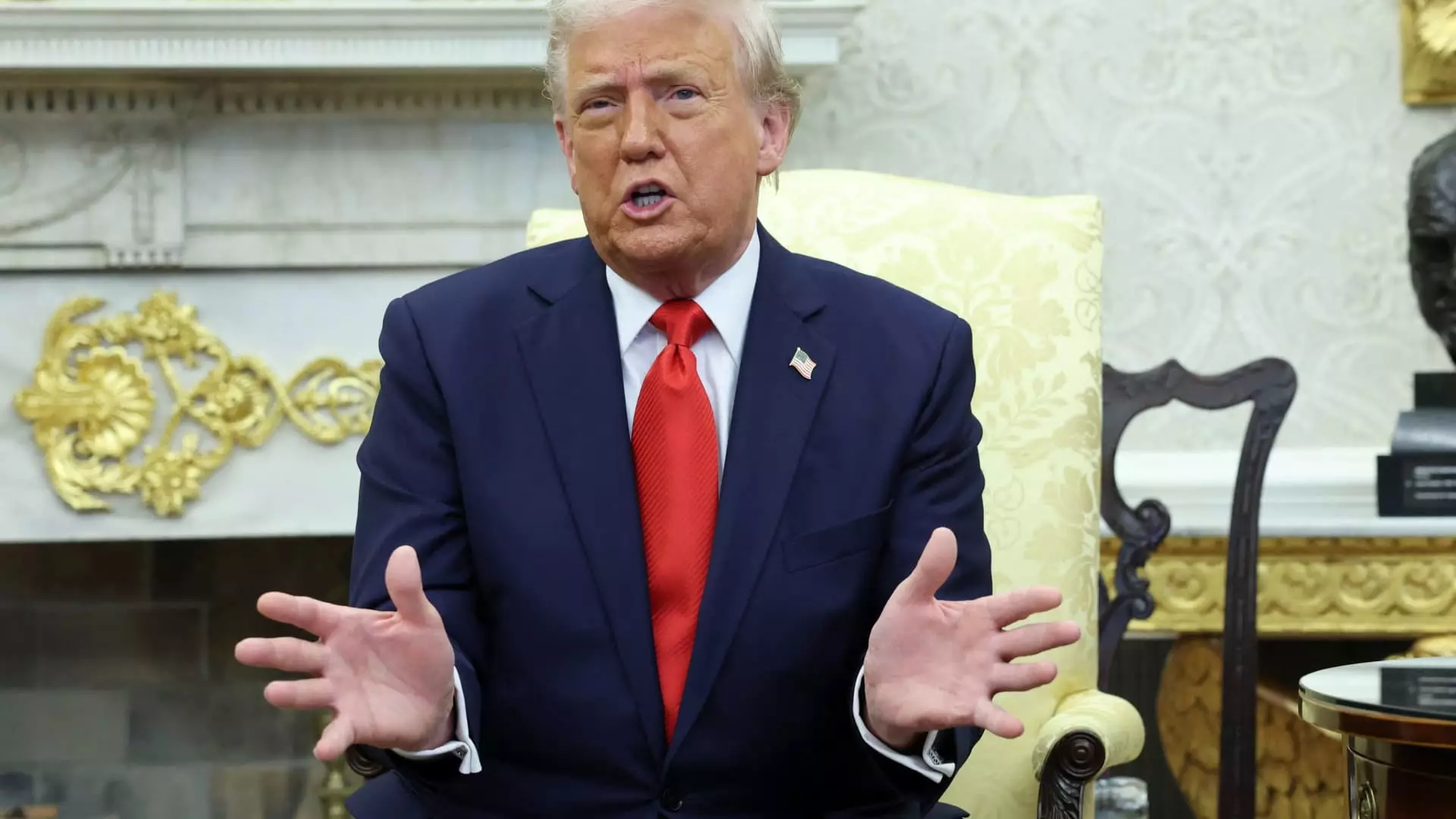In an unforeseen twist, the opening quarter of 2023 showcased Wall Street’s largest-ever profits from stock trading, amounting to a staggering $16.3 billion for the six leading U.S. banks. This spike, spurred by the early months of Donald Trump’s presidency, highlights just how unpredictable and volatile the financial markets can be. As the political landscape shifted rapidly, institutional investors found themselves scrambling for positions amidst new policies, tariffs, and a rollercoaster of economic predictions. Notably, banks like Goldman Sachs and Morgan Stanley reported impressive revenues of roughly $4 billion each in equities trading alone, a remarkable 33% increase from the previous year and surpassing performances seen during tumultuous periods like the 2008 financial crisis.
A False Expectation of a Trump-fueled Boom
When Trump took office, many speculated that his administration would usher in a golden era for Wall Street, particularly for investment banking and mega-deals. However, rather than benefiting the dealmakers, the real winners turned out to be the traders occupying the frontlines of the stock markets. Deal activity, initially anticipated to surge, has instead remained lackluster, showcasing the disconnection between the political realm and its impact on corporate decision-making. The hesitation of CEOs to commit to significant strategic decisions amid a cloud of uncertainty has left robust trading desks to dominate the revenue landscape, as they adapt to rapidly changing conditions and capitalize on market volatility.
Heightened Market Activity and the Role of Volatility
Market analysts predict that this level of heightened trading activity is here to stay, primarily driven by ongoing volatility. As institutional investors look to exploit short-term gains, banks are stepping up to facilitate this frenetic pace. According to James Shanahan, a bank analyst, the uptick in equities trading will continue as long as uncertainty lingers. The trading boom, while profitable for the banks, could prove to be a double-edged sword. It does cushion them against the potentially disastrous effects of an economic downturn, but at the same time, it reflects an uncertain economic outlook; JPMorgan’s forecast of an increase in unemployment to 5.8% later in the year resonates with the precarious state of the economy.
Implications for Regional Banks and Broader Economic Landscape
In contrast, regional banks have found themselves in a precarious position. With limited trading operations and stagnant loan growth, they are becoming increasingly vulnerable to market forces. The stark divide between Wall Street giants and regional institutions symbolizes a widening gap within the banking sector—that while mega-banks thrive off of capitalizing on volatility, smaller banks are left without the tools to compete. The increased borrower defaults and stagnating loans further exacerbate this issue, painting a grim picture for the future of local and regional banking in an ever-evolving financial landscape.
The Role of Tariffs and Trade Tensions
Trump’s administration introduced a wave of uncertainty into the markets with its aggressive tariffs and trade disputes. This element of unpredictability not only impacted American markets but also global trading dynamics. From targeting industries like steel and automobiles to escalating tensions with China, these decisions have led to a seesaw of market movements affecting investor sentiment. As traders adjusted their strategies to these changes, Wall Street reacted with remarkable agility, showcasing how well these institutions can adapt to the whims of political maneuvers. The chaos around trade policies, especially early in Trump’s term, contributed significantly to the uptick in trading volumes, leading to a lucrative quarter for major banks.
The Evolution of Wall Street’s Trading Strategies
The financial industry has transformed significantly since the 2008 financial crisis, shifting towards a model that emphasizes quick execution and client facilitation over taking risky bets with firm capital. This evolution is largely credited to the leadership of executives like Morgan Stanley’s Ted Pick, who have successfully restructured trading operations to meet the demands of modern investors. Instead of gambling with their own resources, these banks are providing leverage and execution services to their clients. This strategic pivot has allowed them to profit irrespective of market direction, cementing their roles as essential facilitators in a volatile trading environment.
Through these insights, it is evident that Wall Street’s recent financial success belies a greater complexity woven into the fabric of our economic reality. While the banks thrive, the broader implications for economic stability and the welfare of smaller institutions loom large, urging us to critically evaluate the true winners in this high-stakes game.

Leave a Reply